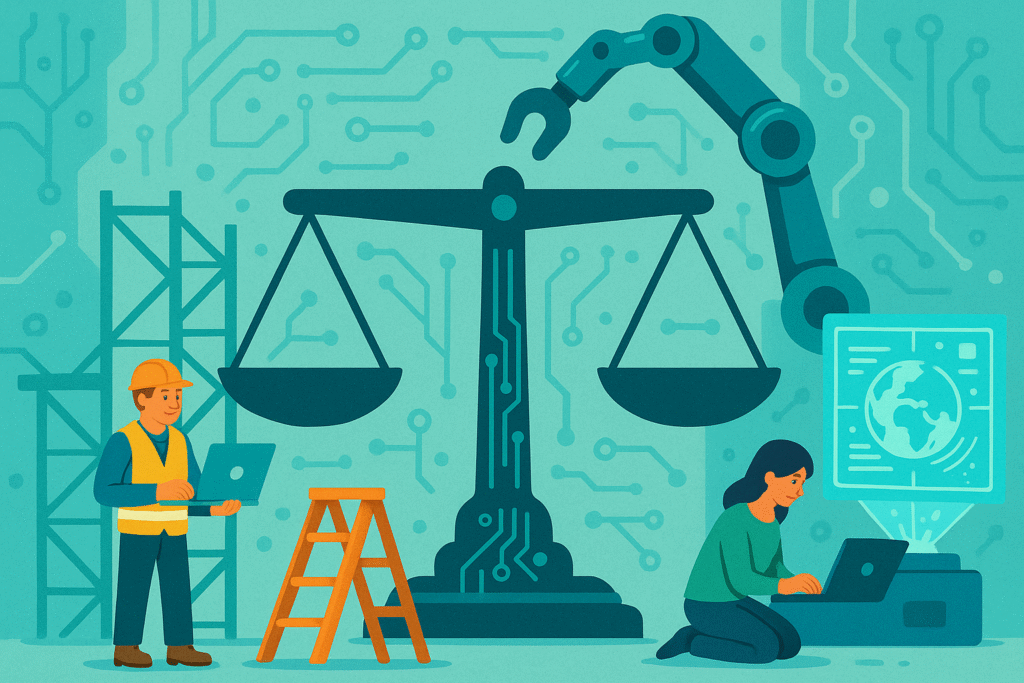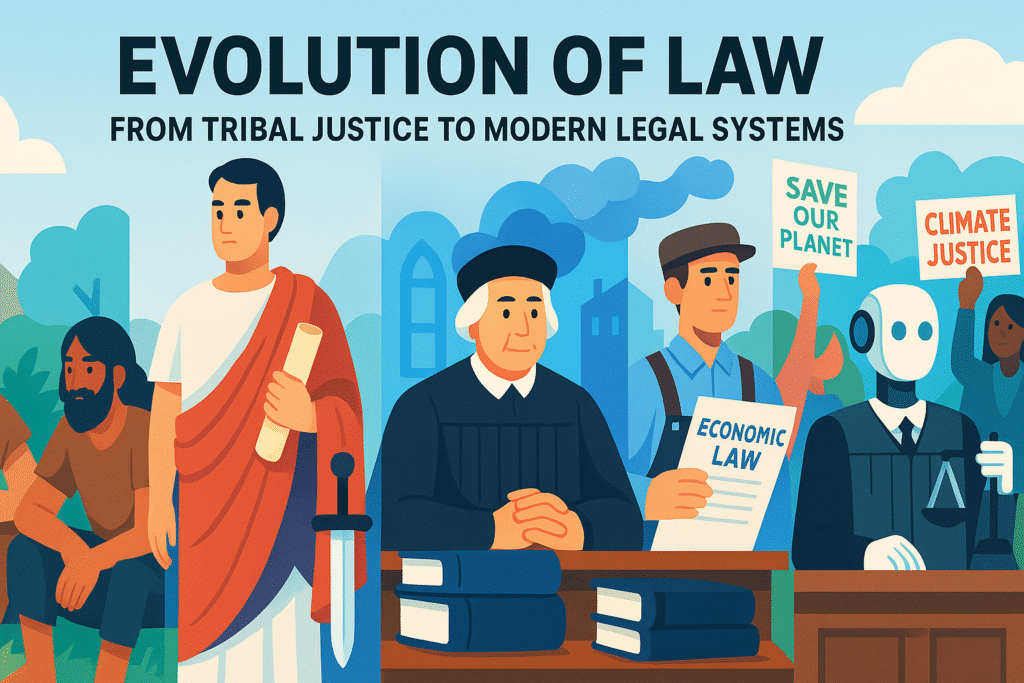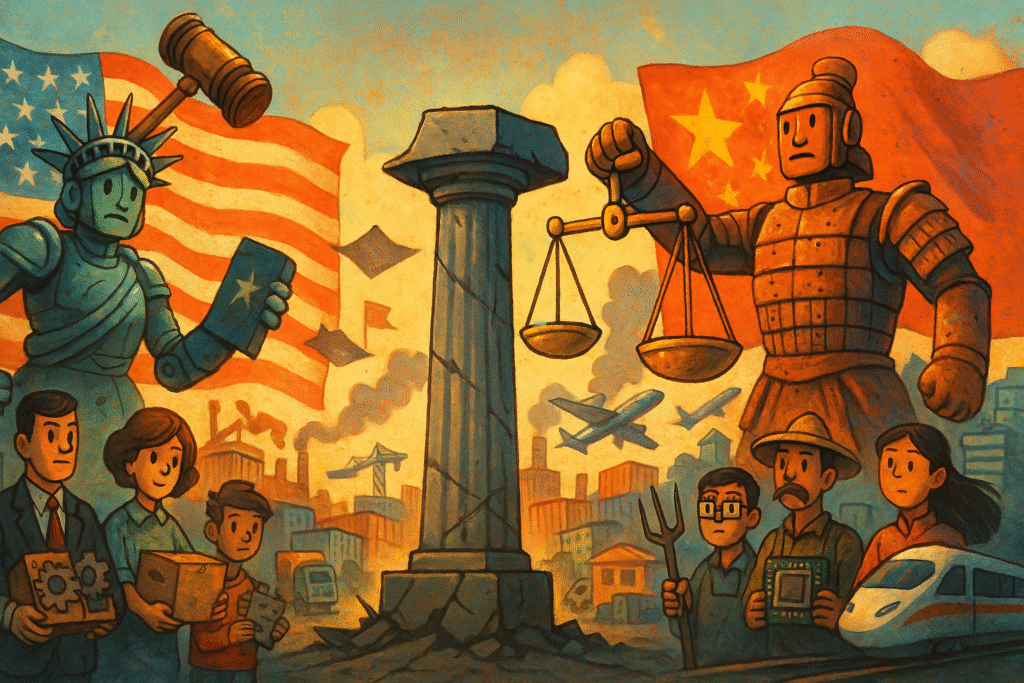AI in Legal Research: End of Research? Or Just the Beginning?
Legal research used to mean late nights, heavy books, and Ctrl+F marathons. Now? You can ask a bot and get a memo in minutes. But does that mean AI is replacing legal researchers or just changing the game?
In this post, we’ll explore how AI is reshaping legal research, what that means for lawyers (and law students), and whether it’s a skill you must learn or a trend you can ignore. Spoiler: you already know the answer.
Here’s what we’re diving into:
What is legal research?
Legal research simply means finding the exact law, rule or regulation that applies to your unique case and conclusively proving how it fits your facts. Mastering it means following a clear, seven-step path:
- Issue spotting: Zoom in on the precise legal question you need to answer.
- Fact gathering: Compile all relevant details—who, what, when, where, and why.
- Secondary‐source review: Consult treatises, law journals, practice guides and expert opinion to evaluate variety of perspectives and to get you warmed up.
- Primary‐source search: Unearth statutes, regulations, and case law that directly address your issue. (Basically, means authoritative sources only.)
- Analysis & synthesis: From among your sources weave together authorities, reconcile conflicts, and draw conclusions.
- Validation: Confirm your sources are still “good law” using citators or online tools.
- Drafting: Package your findings into a clear, persuasive memo or brief.
What Can Be The Impact of Using AI in Legal Research?

AI is creeping into every corner of legal research—especially Steps 3 to 7. But just because a robot can do it… should you let it?
It all boils down to one question: Do the benefits outweigh the risks?
Below is a vivid, side-by-side comparison of three approaches:
- Doing it fully manually
- Using AI as a sidekick
- And unleashing AI in full force
This breakdown doesn’t just reveal how much time or effort each one takes—it helps us answer the real question:
Will AI replace legal research?
And should you even bother learning it… or learning legal research at all?
Let’s see how the scales tip.
Method 1: The Fully Manual Legal Research Grind
(No AI. Just you, your brain, and a lot of Ctrl+F.)
Let’s start with the most classic route—the pure, unassisted manual method. Think books, commentaries, digests, and database searches handled the old-school way. Here’s how it plays out when researching a question like:
“Can pre-arrest bail be granted under the POCSO Act when the FIR includes both POCSO and BNS charges?”
You’re looking at a 6-step deep dive: fact gathering, research planning, reading through treatises, case law digging, legal synthesis, and drafting. Let’s break that down.
📝 Step-by-Step Breakdown
1. Record Facts & Define the Issue
You begin by locking down the who, what, and under which law. In this case: an FIR invoking both POCSO and BNS—so the burning question is whether BNS anticipatory bail rules survive when POCSO enters the chat.
⏱️ Time: 1–1.5 hrs
2. Create a Research Plan
Set your path: choose jurisdiction, pick keywords (“POCSO bail,” “BNSS anticipatory bail”), and decide where you’ll dig—books, SCC Online, print reporters, etc.
⏱️ Time: 0.5 hrs
3. Consult Secondary Sources
This is your warm-up lap. Hit up commentaries on BNS/BNSS and POCSO, and read practice guides or journal articles to catch context and spot leading citations.
⏱️ Time: 1.5–2 hrs
4. Search Primary Sources
Now the heavy lifting. Pull relevant BNS and BNSS provisions (especially those replacing old CrPC anticipatory bail sections), plus landmark judgments on bail under POCSO and BNS. The key is to check how courts are reading overlaps—or conflicts.
⏱️ Time: 3–4 hrs
5. Analyze & Synthesize
This is where it gets lawyerly. Compare special vs general laws. Ask: Does POCSO bar pre-arrest bail outright? Does BNS still apply when both are triggered? You’ll want to show both sides:
- For bail: If BNS permits it, and POCSO stays silent.
- Against bail: If POCSO restricts it, or overrides BNS by design.
And of course—run a validity check. No one wants to cite a dead case.
⏱️ Time: 2–3 hrs
6. Draft Your Memo
Time to put it all on paper. A tight structure—Facts → Issue → Applicable Law → For → Against → Conclusion. Don’t forget proper citations.
⏱️ Time: 1–1.5 hrs
🧾 Verdict on the Manual Method
- Total Time: 10–14 hours
- Expected Quality: Moderate to Good
- You’ll hit the core issues, spot key cases, and cite things correctly.
- But chances are, you’ll miss the latest High Court split, a stray 2024 ruling, or that niche judgment buried 8 clicks deep.
- Bonus: Including both for and against arguments boosts credibility—courts (and clients) love balance.
Ready for the faster, smarter methods? Let’s see how AI compares.
(Next: Assisted Legal Research using plain prompts.)
Method 2: AI Research with a Plain Prompt
(Fast. Impressive. But not quite courtroom-ready—yet.)
Now let’s say you skip the books and go straight to the bot. You pop open ChatGPT or your AI of choice, type in a legal question in plain English, and let the machine cook. For example:
“Under India’s POCSO Act and BNS (‘Bharatiya Nyaya Sanhita’), can a court grant anticipatory bail when the FIR includes both POCSO charges and BNS offences? Provide key statutes, landmark cases, and pros/cons.”
Sounds solid. But how deep does it really go?
⚙️ Step-by-Step Breakdown
1. Crafting the Initial Prompt
Paste your question, keep the tone normal, and hit enter. AI will give you a neat, readable summary. But don’t expect it to flag subtleties like BNSS §482(4)’s bail exclusions.
🔎 Tip: The AI may cite CrPC §438 analogs instead of the updated BNSS structure—watch out.
⏱️ Time: 2–3 minutes
2. Review & Evaluate the Output
Skim the AI’s answer. Did it mention BNSS §482(4) and its gang-rape exception? Did it pull any recent high court cases on POCSO bail? If not—note those gaps.
🧩 Spot the holes before they become your holes.
⏱️ Time: 15–20 minutes
3. Verify Statutes & Cases
Hop onto SCC Online, Manupatra, or your preferred legal database. Cross-check:
- BNSS §482 and its exclusions
- POCSO §§ 42–45 (on trial jurisdiction and overlaps)
- At least one real case where bail under POCSO + BNS was discussed
🔐 No skipping this step—AI gets confident even when it’s wrong.
⏱️ Time: 30–45 minutes
4. Expand the Draft with Follow-Ups
Copy your gaps back into ChatGPT:
“Thanks—can you include BNSS §482(4)’s gang-rape exclusion and cite a recent Delhi High Court case on POCSO anticipatory bail?”
This rounds out the analysis and brings in both for and against arguments.
🛠️ Now you’re building the AI into a co-counsel, not just a copywriter.
⏱️ Time: 10–15 minutes
5. Format & Finalize the Memo
Use the updated draft to shape your memo. Add:
- Proper citations (e.g., “(2023) Del HC 456”)
- Pros and cons structure:
- For bail: BNSS §482(1)’s broad anticipatory bail provision
- Against bail: POCSO-specific bars + BNSS §482(4)’s exclusions
✍️ The AI gave you the bricks—you’re still laying the foundation.
⏱️ Time: 15–20 minutes
6. Final Quality Check
- Breadth? Yes. You’ll get the major statutes and 1–2 landmark cases.
- Depth? Surface-level. No deep doctrinal dive or jurisdictional nuance.
- Accuracy? Mostly right, but prone to mixing up section numbers or quoting outdated cases.
Overall Quality: Fair to Good. Gets you a strong starting point—but needs human eyes and backup research to match a well-done manual memo.
⚖️ Verdict on the Plain Prompt Method
- Total Time: ~1 to 2 hours
- Average Output: A clear, concise legal memo—cited, structured, and 70–80% there.
- Caution: AI skips nuance unless asked directly. You still need to verify, expand, and balance.
Best Use: Speedy first draft, briefing note, or quick reference—but don’t submit it to court without a legal soul-check.
Method 3: AI + Expert Prompting = Legal Research on Steroids
(Smarter prompts. Smarter AI. Surprisingly good output.)
This is where things get sharp. You’re not just tossing a question into a chatbot—you’re engineering a precision query inside a premium legal AI platform (think Westlaw Precision AI, Casetext Compose, or Bloomberg’s Points of Law). And the difference shows.
Let’s say your research task is the same:
“Can pre-arrest bail be granted under the POCSO Act when the FIR includes both POCSO and BNS offences?”
But instead of hoping for a decent summary, you design a detailed, structured prompt—one that commands the AI to deliver depth, not fluff.
⚙️ Step-by-Step Breakdown
1. Crafting the Advanced Prompt
Use a multi-part request like:
“I need a detailed memorandum on pre-arrest bail under the POCSO Act and BNSS (§482 & §482(4)). Please:
– List all relevant statutory provisions and how they interact
– Cite 3 SC and 2 HC judgments on anticipatory bail under both laws
– Give arguments for and against, with citations
– Flag any major changes or lower-court divergences post-2023”
This sets the AI up to pull not just statutes and headnotes, but strategy. It knows where to look and what kind of answer you want.
⏱️ Time: 5 minutes to draft and tweak the prompt
2. Source Retrieval & Verification
Once you hit “run,” the platform springs into action. It:
- Grabs updated POCSO and BNSS texts
- Locates leading cases—e.g., Gaurav Jain v. Union of India and key high-court bail rulings
- Pulls headnotes, extracts legal standards
- Runs automated Shepardizing or KeyCite checks to flag overruled decisions
Then you step in for a quick review—checking for gaps and making sure the “for” and “against” sides are balanced.
⏱️ Time: 10–15 minutes
3. Deep-Dive Analysis & Synthesis
Now you start asking follow-ups:
“Expand on BNSS §482(4)’s gang-rape exclusion and recent Delhi HC bail decisions under POCSO.”
The AI responds with updated analysis, citations, and (if your tool supports it) treats you to side-by-side argument tables or summaries from leading commentaries like Ratanlal & Dhirajlal.
You’re shaping the output in real time—filling gaps before they become problems.
⏱️ Time: 10–20 minutes
4. Drafting & Formatting the Memo
Export the results into a memo template—complete with headings, subheadings, and inline citations. Most platforms let you pick citation styles (Bluebook, SCC, AIR, etc.), insert footnotes automatically, and even build TOCs.
Polish the tone that suits you
⏱️ Time: 5–10 minutes
✅ Verdict on the Expert-Prompt Method
- Total Time: ~45–60 minutes
- Output Quality:Very Good to Excellent
- You’ll get a court-ready memo—balanced, current, and backed by clean citations
- You’ll save hours
- And if you know how to prompt well, it might even outperform a junior associate on their fifth cup of coffee
Best Use: When time is tight, stakes are high, and “pretty good” won’t cut it.
Ready for the recap? Let’s compare all three methods head to head.
(Next section: Manual vs AI — Time, Cost & Risk.)
TL;DR: Quick Comparison & Conclusion
| Method | Total Time | Output Quality & Benefits | Risks |
|---|---|---|---|
| Manual | 10–14 hrs | Solid foundational understanding; builds legal instincts; well-cited memo (if thorough) | Time-consuming; may miss updates or obscure rulings without a citator |
| Normal AI Prompt | 1–2 hrs | Fast draft; good surface-level coverage; useful for quick briefings or brainstorming | Can overlook statute nuances, misquote sections, or invent cases if not verified |
| Advanced AI + Legal Tools | 0.5–1 hr | High-quality memo with accurate citations, recent rulings, and argument balance; strong ROI for smart users | Low risk—but only when user verifies output and prompts precisely; overreliance is risky |
Here’s the deal: AI won’t ruin legal research—lazy research will.
The manual grind still teaches fundamentals, but it’s slow and prone to human blind spots. Basic AI gets you faster results, but it’s like hiring a bright intern—great ideas, shaky on the footnotes.
The real power? Comes when you pair smart prompts with smarter tools. Legal AI assistants, when properly handled, deliver high-quality output in record time. But that “properly handled” part is key.
Clearly, AI doesn’t just trim the fat, it slashes 10–14 man-hours down to a lean 1–2 hour sprint. That alone is a game-changer. And let’s be honest: in a profession where time is money, that kind of efficiency is more than attractive, it’s inevitable.
In a world that’s constantly speeding forward, standing still is just falling behind more slowly. So if you’re asking, “Should I learn AI for legal research?” the answer is a resounding yes. Because even if you don’t adapt, your competitors will. And they won’t wait for you to catch up.
But hold that thought, because while AI may be transforming legal research, we’re not ready to declare it the sole ruler just yet. To truly answer “Will AI replace legal research?” we’ve still got more ground to cover. Let’s dig deeper.
The Global Pulse: How The World Is Treating AI Assisted Legal Research?

Let’s zoom out.
While most of us are still learning to prompt like pros, legal AI is already reshaping workflows around the world—and fast.
First, a peek under the hood: most legal AI runs on something called RAG—Retrieval-Augmented Generation. Instead of relying purely on what it was trained on, RAG-based tools fetch live information from legal databases before generating answers. That’s how today’s top systems can quote relevant cases and legislation… sometimes better than juniors on a deadline.
And the time savings? Staggering.
Estimates suggest that by 2029, AI will save legal professionals up to 12 hours a week. Right now, tools that assist in contract review alone shave off about 40% of the time it takes to analyze, compare, and flag discrepancies across agreements. That’s not just efficiency—it’s strategic advantage.
Even better: AI doesn’t just work faster, it often works cleaner. For systematic tasks like categorizing documents or reviewing contracts against a template, studies show a 60% jump in accuracy compared to manual methods. The catch? It shines best when the input is structured—like baseline contracts (a previously drafted, ideal contract, by user) —not messy, multi-layered legal grey zones.
Because yes, there’s still a dark side.
Even flagship tools by major providers like LexisNexis and Thomson Reuters still hallucinate—between 17% to 33% of the time. That means your AI might confidently cite a case… that doesn’t even exist. Which is why human review remains non-negotiable. Especially when it comes to nuanced interpretation—where subtle statutory language and precedent logic still demand an experienced brain, not a prediction model.
That said, what AI can already do is pretty incredible.
It pulls case law via natural-language queries (no Boolean logic required), automates document review, and transforms due diligence into something you can run on lunch break. Even drafting is evolving—AI can generate structured templates for contracts or memos that lawyers can refine, saving time on grunt work while keeping final control human.
Global Reach, Local Realities
In advanced legal markets like the U.S., U.K., and Australia, AI adoption is already widespread. Big players like Lexis+ AI are layering AI onto massive databases—delivering fast results, auto-summarized statutes, and increasing access across the board. And it’s not just for megafirms anymore; small firms and solo lawyers are tapping into the same power, slowly leveling the field.
But don’t let the buzzwords fool you. Cost disparity still matters. Advanced tools aren’t cheap—and smaller outfits might not get full access. Plus, AI systems perform best in data-rich, digital jurisdictions. Meaning? They’re more accurate in the U.S. than in, say, rural India. Less digitization = more hallucination.
Still, the picture’s changing fast.
In emerging markets like India, Brazil, and China, AI is being adapted to meet local challenges. India’s e-Courts mission now leans on AI to manage heavy caseloads. In China, the Supreme People’s Court built a system to match judges with similar past cases—turning precedent search into clickwork.
Meanwhile, in developing legal systems, like parts of Africa or Southeast Asia—AI might be the leapfrog tech. Tools that run on mobile phones, need minimal infrastructure, and deliver real-time legal access are already unlocking law in underserved communities. This is where AI can genuinely democratize justice.
Caution Signs & Guardrails
Of course, the higher the power, the sharper the risk.
Transparency, data protection, and ethical accountability are now front and center. AI that touches legal work needs to respect confidentiality, especially in cross-border matters where data sovereignty laws vary. The EU’s AI Act already classifies legal AI as “high-risk,” requiring human oversight and transparency. And if your AI processes client-sensitive info on a public cloud? You better know where that data’s going.
Where It’s All Headed
In the short term, expect a push for better reliability and smoother integrations. AI tools will soon plug directly into your practice management and document systems, and regional language support is improving fast—critical for civil law and multilingual countries.
In the long term, we’re looking at a full shift in how law is practiced. Legal research won’t disappear—it’ll evolve. AI will handle the heavy lifting while lawyers focus on strategy, nuance, and human judgment. Research will become more cross-jurisdictional, and legal knowledge more harmonized across borders. That could mean greater parity, even in regions with minimal infrastructure—if we build tools thoughtfully.
Conclusion – Embracing the Next Chapter of Legal Research

We started by unpacking what legal research really is—a systematic quest from issue spotting to memo drafting and then ran a hands-on experiment comparing three methods: the old-school manual grind, basic AI prompts, and high-powered AI tools. Finally, we surveyed the ongoing global impact of AI: massive time savings, boosted accuracy in structured tasks, but still a fair share of hallucinations and rollout challenges.
Here’s the verdict: AI does deliver huge advantages—there’s no doubt you should learn it. It answers the “why bother?” question once and for all. Yet the data and our own experience tell us AI won’t fully replace legal research overnight. Inaccuracies persist, and widespread adoption needs time, money, and infrastructure.
But mark my words: this is just the beginning of quality research. As more players wield AI well, mediocrity will vanish. Standards will climb, and legal research will get sharper. Think about it—AI levels the field so that a litigant in rural Bangladesh can go toe-to-toe with a big New York firm. That’s equality… and fierce competition.
Who stands to gain most? Young law students and early-career lawyers. Master AI now, and you’ll ride the curve, gaining nuanced insight as the technology evolves. Just remember: your legal acumen is still king. AI hallucinates; only an expert eye can catch the errors. First be a master of law, then a master of AI.
At the end of the day, AI is a tool—its power is in your hands. A savvy user can scale unimaginable heights; a sloppy one can stumble into disaster. Future lawyers won’t be the fastest typists—they’ll be the sharpest thinkers. And above all, AI may replace the execution, but the ideas remain yours.
Wondering how Law got to this point of using machines? Read our post on Evolution of Law to find out, or browse our collection below.



